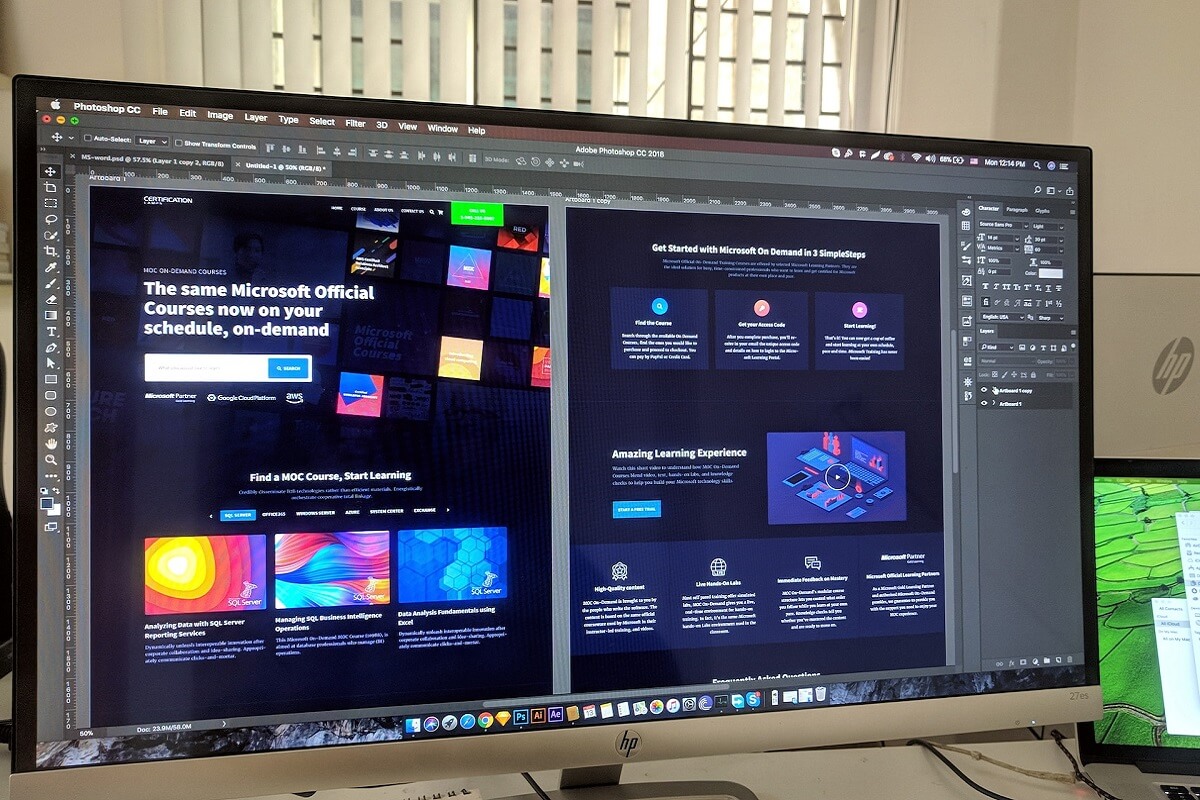Web design, an evolving medium, continuously adapts to the changing needs and preferences of users and businesses. Two dominant trends, minimalism, and maximalism, have shaped the website and popup template design with their philosophies and impact on user experience, engagement, and business outcomes.
Minimalism: A Focus on Simplicity and Functionality
At its core, minimalism in web design aims to remove elements to create an uncluttered interface. This approach emphasizes simplicity, functionality, and easy navigation. Key features of minimalist web design include a color palette, ample white space, simple typography, and a focus on content.
The Business Implications of Minimalism: Minimalist design can enhance user experience by minimizing distractions and focusing on the content. This approach can lead to improved website performance, lower bounce rates, and higher conversion rates. Moreover, minimalistic designs often result in loading times and better mobile responsiveness, factors that are crucial in today’s mobile-first world.
Limitations: Although minimalism appeals to an audience, it can sometimes be perceived as simplistic or lacking personality. Businesses may face difficulties in effectively conveying their brand identity through design. Moreover, the growing popularity of this trend has resulted in a homogeneity in web design, potentially making it more challenging for websites to distinguish themselves.

Maximalism: Embracing Complexity and Creativity
In contrast to minimalism, maximalism embraces intricacy, vibrancy, and expressive design elements. Color schemes, dynamic visuals, intricate layouts, and an abundance of visual content characterize this style.
The Business Implications of Maximalism: Maximalist designs have the potential to create a captivating user experience that helps brands stand out in a digital landscape. This approach allows for creativity and storytelling capabilities, which can be particularly advantageous for brands seeking to convey an identity or narrative.Limitations: However, it’s important to exercise caution when implementing maximalism, as it can overwhelm users if not executed thoughtfully. Overloading a website with elements may lead to confusion, hinder usability, and negatively impact site performance. Designers should strive to strike a balance between creativity and functionality.
Balancing Minimalism and Maximalism: A Strategic Approach
The decision between minimalism and maximalism should be guided by the brand’s personality, audience preferences, and business objectives. An emerging trend involves blending both styles to leverage the strengths offered by each approach.
Hybrid Designs: By combining principles, like layouts and generous white space, with maximalist elements such as bold visuals and creative typography, designers have the ability to craft distinctive, captivating, and user-friendly websites.
Customization and Personalization: Technological advancements empower businesses to deliver personalized web experiences. By leveraging data analytics and user feedback, companies can tailor their design approach. Be it minimalist, maximalist, or a blend of both it should cater to the needs and preferences of their target audience.
Future Trends in Web Design
As we gaze into the future, there are trends that are likely to shape web design;
- AI and Machine Learning: These cutting-edge technologies are on the brink of revolutionizing web design by offering more dynamic and personalized online experiences. AI has the capability to analyze user data in order to predict and adapt to preferences, thus providing a customized browsing experience. Machine learning algorithms can automate design processes, optimize website layouts for user segments, and generate content, ultimately making websites more interactive and responsive to users’ needs.
- Augmented Reality (AR). Virtual Reality (VR): The integration of AR and VR technologies into web design holds potential for creating experiences. In e-commerce scenarios, for instance, AR can enable customers to visualize products within their spaces before making a purchase. Virtual reality (VR) has the power to revolutionize storytelling by providing users with an interactive narrative experience. These innovative technologies enhance user engagement and open up opportunities for creative expression and branding.
- Sustainability and Ethical Considerations: There is a growing emphasis on sustainability in web design. Designers are increasingly adopting eco practices, such as utilizing hosting solutions and optimizing images and code to minimize energy consumption. This shift reflects a commitment to reducing the impact of digital platforms and promoting responsible consumption patterns. Ethical design also involves considering the implications of websites, ensuring they do not perpetuate biases or spread misinformation.
- Accessibility and Inclusion: Designing websites that are accessible and inclusive is crucial in reaching a wide range of users, including those with disabilities. This includes incorporating design principles that accommodate needs, such as making sure screen readers can interpret content for impaired individuals or implementing easy navigation options for those with motor disabilities. Inclusive web design also considers backgrounds and languages, guaranteeing that content is accessible and relevant to diverse audiences. By doing so, websites not only meet legal requirements but also demonstrate a commitment to social responsibility while expanding their reach.
Conclusion
The world of web design revolves around striking the balance between aesthetics and usability. It’s like finding the balance between the simple aesthetics of minimalism and the bold, vibrant style of maximalism. The utmost priority is to create websites that cater to users’ needs and desires. These sites should not capture attention but also function effectively for businesses.
With the emergence of technologies, web design undergoes transformation. This brings about opportunities and challenges for both businesses and web designers. To thrive in this evolving field, it is crucial to remain adaptable, truly comprehend the target audience for your website, and utilize design trends intelligently. By adopting this approach, you can develop websites people enjoy using while benefiting your business growth.






























![The Role Of Color Schemes In Web Design [Full Guide] web design minimalist](https://www.hawkdive.com/media/web-design-minimalist-218x150.jpg)





